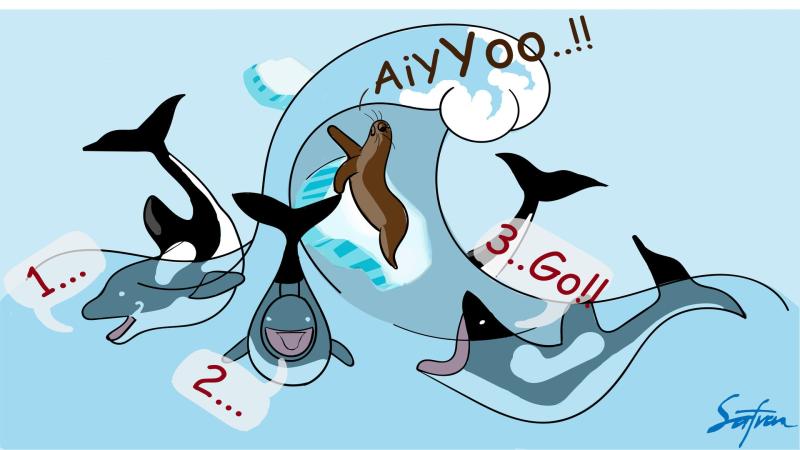
Killer whales, also known as killer dolphins or orcas, are toothed-whales belonging to the Delphinidae family. Measuring 5–8 metres and weighing 2–6 tonnes, these black and white whales are found in oceans all over the world, most commonly in the Arctic and Antarctic.
Being the largest of oceanic dolphins, nothing in the sea dares to hunt them. Killer whales are often mistaken to be ferocious enough to kill any whale and human, earning them the name ‘killer’. But these ‘sea pandas’, fondly called so because of the colouration on their bodies, are far less violent. Not a single incidence of a wild whale killing a human has been reported.
Killer whales are the only known creatures in which all the offspring stay with the mother for her entire lifetime. These whales have evolved a bigger brain to manage familial tasks like keeping track of other family members, their identity, cooperating between the group and reducing or resolving conflict. Their brains also help them in navigating their geography, social networking and sound analysis, as these whales, like all other dolphins, perceive their environment through sound.
Decades of research suggests that there are at least eight different types of killer whales with varying habits of food and hunting techniques. All of them almost always share food among the members of the group, even when it has a chance to eat it alone. Since the different kinds have stopped interbreeding among themselves, there is a possibility of them being distinct species.
A type of killer whales, called ‘pack-ice killer whales’, use a rather unusual technique to hunt seals resting on ice floes. When a whale spots a seal, it examines it to make sure it is the right species and comes back with its companions. After they collectively size it up, they decide to hunt it or not. If they choose to attack, they pump their tails, making high waves, which crashes into the ice sheet. This wave washes the seal into the water and directly into the mouth of the hungry whales. It would be hard to pull this off without cooperation and synchronization.
Some killer whales inhabit Antarctica and hunt penguins, feeding only on their breast muscles and discarding the rest of the carcass. Close by, the Ross Sea killer whales, the smallest known type, hunt Antarctic toothfish. The toothfish uses anti-freezing proteins and survive below freezing temperatures within the deep cracks of the frozen ocean. Ross Sea killer whales penetrate these miles-long crack to hunt for them. The 'offshore killer whales' are small killer whales with distinct calls and roam the North Pacific, hunting sharks.
Another type of killer whales hunts herrings in groups, each having a specific role to perform while maintaining effective coordination and communication. The group drives the herring school to the surface and herds them into tighter and tighter balls by swimming around them. Each member of the group takes turns to dive beneath the school and loop around it. Blowing bubbles, calling frantically and flashing their white bellies, the whales frighten the herring, which leap about on top of the water, trying to escape. Once under control, the orcas slam the edges of the school to catch the prey. This cooperative hunting tactic is called carousel feeding.
Although we know so much about how these whales hunt and eat, we are barely starting to understand their behaviour and conservation status. Indeed, more appreciation is due these intelligent, maternal, cooperative and intensely social creatures.





